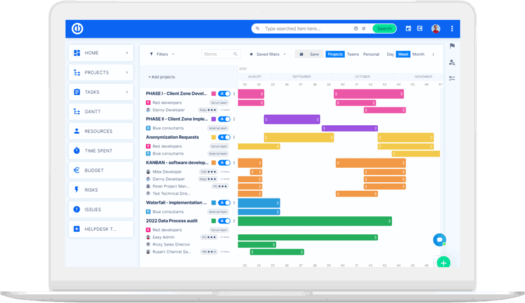The Seven Costliest Mistakes of Risk Management
If you are a project manager, identifying and managing risks correctly must be your top priority. When not dealt with appropriately, risks can manifest into costly problems for your business.

Unfortunately, the volume and complexity of risks are increasing every day. From rapid technological advancements and increased connectivity to crisis events like the ongoing Coronavirus pandemic, risks are getting harder to predict and handle. As a result, project managers are more open to mistakes and failures than ever.
One of the most effective ways to pick up proper risk management practices is to learn from others’ mistakes.
Below are seven risk management mistakes to avoid when running a project.
1. Ignoring opportunities
Project managers are human. Like most other humans, they often associate risk with bad things. Even highly trained managers ignore the possibility that an opportunity can come from a risk event.
Successful project managers do not just aim to mitigate risk. Instead, they analyze it and see what moves to make to turn the risk into an opportunity. For example, if a major risk threatens one of your ongoing projects, you can decide to put it on the backburner and redirect resources to a more promising endeavor.
2. Confusing causes, events, and impacts
The first step in a risk management plan is identifying the risks that may affect a project. However, project teams often fail to differentiate between causes, events, and impacts. As a result, they lose focus on actual risk events.
A risk cause is an existing circumstance that can create a risk event. If your developer is tied up with too many projects at once, you are facing a risk cause.
Meanwhile, risk events are occurrences that may or may not result from a risk cause. Following up with the example above, the busy developer can fail to give your project the attention it deserves, or they may end up balancing their workload successfully.
A risk impact is the result of a risk event. In this case, the event is your project failing because the developer did not attend to it as required.
Defining these risk elements clearly will help you pinpoint precisely what you need to manage.
3. Over-relying on checklists
Many companies do similar projects frequently, and most of the risks they encounter will be the same for each project. An example is an IT team that specializes in data migration. In such situations, a risk checklist can save a great deal of risk identification time.
However, this approach exposes teams to complacency - falsely assuming that the only risks possible are those on the checklist. While the checklist is a good place to start, do not forget to scan the horizon and identify any other possible risks.
4. Underestimating risk probability
Once all project risk events are identified, the next step is to categorize them based on probability. High probability risks must be dealt with before the project is executed. Some project managers downplay risks intentionally to prevent attention and protect their credibility.
The problem with underestimating probability is obvious. Your team might not take the right measures to reduce this probability, and the project may end up failing.
5. Focusing entirely on mitigation
When many project teams discuss risk response, all they talk about is mitigation. However, mitigation is only one response technique and is specifically meant for risks that are threats. To respond to risks correctly, you must create a comprehensive response plan that considers mitigation and other possible approaches, such as avoidance, transference, and acceptance.
Mitigation merely aims to reduce the probability or impact of negative risk events. You can deal with some risks better with the avoidance response, which entails eliminating the risk by addressing the causes. Alternatively, you can use transference and bring another partner on board to shoulder the risk. Finally, if no other approach seems plausible, you can opt to accept the risk and develop a contingency plan if the event occurs.
Focusing entirely on mitigation can cause you to lose sight of the right response for a given risk.
6. Not delegating effectively
Some project managers find it difficult to delegate and end up taking responsibility for other team members. A key part of risk response planning is to assign ownership of each risk. As the project lead, you must avoid assigning risks to yourself. Instead, assign the risks according to your team’s individual skill sets.
All risk owners must implement the response plan, monitor the risk, and issue status reports. This structure creates accountability and makes a response plan more effective.
7. Not managing risks continuously
Unfortunately, many projects lead consider risk management as a task that begins and ends during project planning. They fill the risk register, file it away and forget it.
On the contrary, risk management needs to be discussed in every project team meeting. Risk owners must give a brief status report on the response actions executed or planned. The team must also address any new potential risks and risk triggers.
Risk management must go on throughout the life of a project.
Easy Redmine can help you avoid costly risk management mistakes
Every successful project rides on the back of an effective risk management strategy. However, mistakes when managing risks are easier to make than you might think.
Fortunately, you do not have to do it all alone. With Easy Redmine, you can create the risk management setup that fits your project perfectly. Easy Redmine’s risk management module brings risk registers, overviews and reporting, qualitative and quantitative analysis, and configurable indicators right at your fingertips so that you can identify, analyze, and respond to risk in the best possible way.
Sign up for Easy Redmine today, and give your project a shot at success.

The ultimate upgrade for your project management? Easy.
Get all powerful tools for perfect project planning, management, and control in one software.
